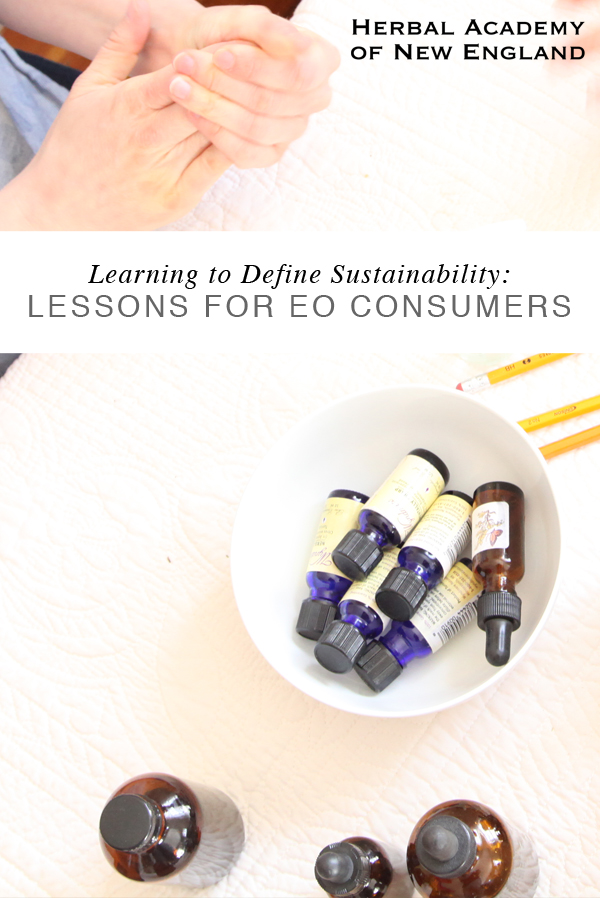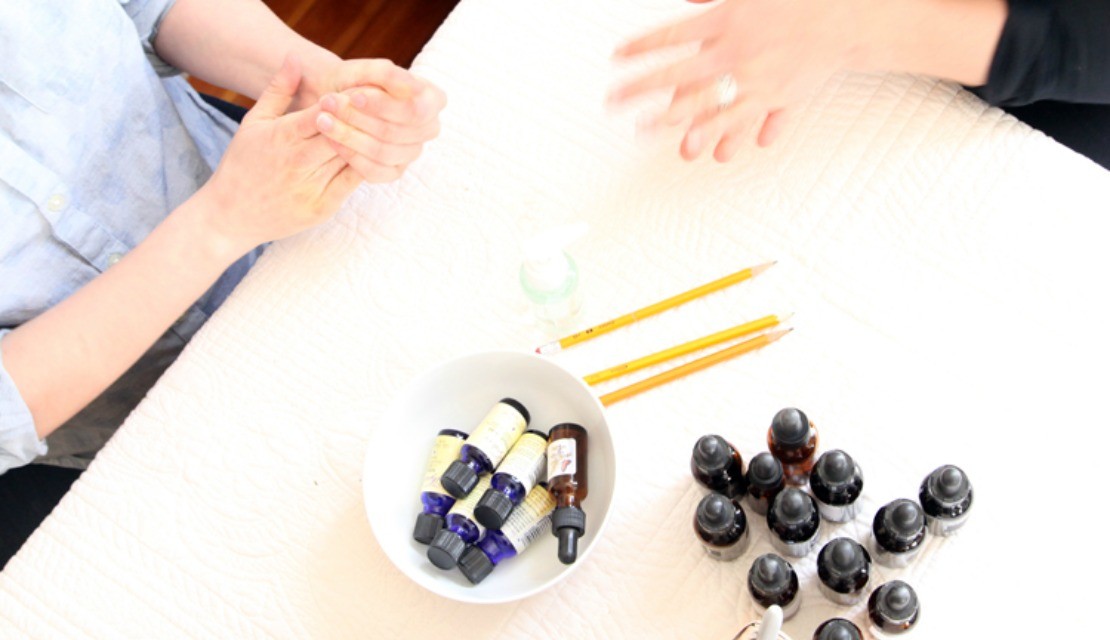
Learning to Define Sustainability: Lessons for Essential Oil Consumers
The Elephant in the Room
Define sustainability. “Sustainability” is a not-so-new term floating around the shelves of our global economy, hot on the tongue of marketers and advertisers ready to sell us the next best thing to organic. Within the natural products industry, “sustainability” is a concept that appears in many dressed-up forms. For example, when we are purchasing essential oils or herbs, we are keenly aware of phrases such as “sustainably harvested” or “ethically wild crafted.” These phrases indicate concepts that we all seem to intuitively understand when we see them on a label, as if they give us clear conscious permission so we can proceed with our purchase.
When we see these phrases, we would like to think that the path this product has taken from its origins to our shopping cart is free from atrocity, dirty business, and unkind environmental practices. But is this really the case? How, for example, can the bark of Hawaiian Sandalwood or Palo Santo be “sustainably harvested” when the biological, ecological, social, and economic data that would define its sustainable harvest do not exist? Can there really be such a thing as “ethically wild crafted” or “ethically harvested” when we are purchasing a critically-threatened species? Can a product be sustainable when an entire culture has become enslaved by its sale on the international market?
Believe it or not, for the average consumer “sustainability” is a concept that is nearly impossible to define. Marketing has done a good job of teaching us that all we need to know is that “sustainable” equals “good,” just as “farm fresh” or “all natural” equals “good” (although they rarely do). So, when thinking critically about the products we purchase, how much do we really know about sustainability and what it truly means?
To emphasize the weight of this question, it is important to remember that there are many businesses and manufacturers (even within the natural products industry) that have mentioned sustainability as a goal, yet often fail to transparently define how it is measured. To further this point, “sustainability,” “sustainably harvested,” or “ethically wild crafted” can mean entirely different things, depending on the product and the company producing it.
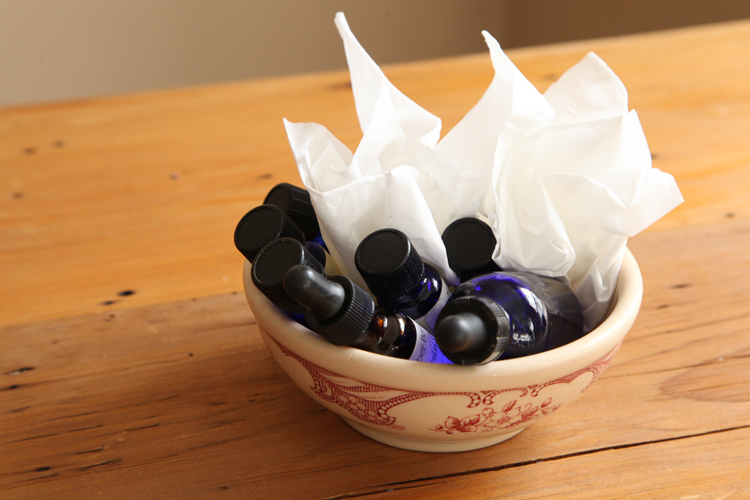
So if businesses and manufacturers are not upfront, clear, or consistent about how they define these phrases, how are consumers meant to interpret their meaning? The answer to that question is pure and simple. As consumers of essential oils, we must educate ourselves, not just about the company and the end product we are purchasing, but also about the plants themselves and their journey to market. We must learn to define the terms “sustainability,” “sustainably harvested,” or “ethically wild crafted” for ourselves, rather than simply trusting a label. This takes work and effort, and for many consumers, this is the elephant in the room. Not only is it sometimes impossible to find all the answers we seek, some of us are fatigued by the idea that our purchasing decisions may require additional energy beyond what is already represented by our dollars.
For herbalists, aromatherapists, and consumers of essential oils and medicinal plants, the journey to defining “sustainability” may be a long one, but it can also be incredibly rewarding. I liken it to going for a run, after having had a tough time motivating myself to put on my running shoes. Afterwards, I feel so good about myself, well in my body and mind, and generally accomplished. So, let’s not get too overwhelmed and discouraged by the work and start our journey together with a few simple definitions.
Learning to Define Sustainability from a Consumer Perspective
Before diving into the sustainability of essential oils, it is important to clearly present some concepts that are meant to define “sustainability” within a larger context. It is from this defining framework that we can then begin to ask questions about the sustainability of essential oils directly. To begin, when we type “define sustainability” into Google or Yahoo what do we find? Give it a try and let’s see. Both browsers point us to the following:
[suh-stey-nuh-bil-i-tee]noun1. The ability to be sustained, supported, upheld, or confirmed.
2. Environmental Science. the quality of not being harmful to the environment or depleting natural resources, and thereby supporting long-term ecological balance
The next listed search result in our browsers is the Merriam-Webster.com definition:
sustainable
sus·tain·able s?-?st?-n?-b?l
adjective
1. Able to be used without being completely used up or destroyed
2. Using methods that do not completely use up or destroy natural resources
3. Able to last or continue for a long time
These definitions seem rather comprehensive as I read them and try to understand the concepts that they explain. Both of these definitions suggest larger issues regarding quantity of resources, impact of long-term resource use and resource availability, and the environmental impact of extracting and utilizing those resources. These definitions are reminiscent of my internal, intuitive definition of “sustainability” and perhaps represent where many of us go in our minds when we try and define “sustainable.” However, more importantly, these definitions raise some interesting resource-based questions.
Using these definitions, we may ask ourselves, “If this product were continually produced in the same way, what types of resources would be needed to sustain, support, and uphold its production to indefinitely confirm its presence in the marketplace?” This is, of course, a loaded question that in and of itself begs further inquiry. For example, what is a resource? Is it plant material? Agricultural land? Fossil fuels? People? Is the marketplace a global or local one?
With these definitions, the issues of environmental degradation and depletion of natural resources are also mentioned. They give us the opportunity to ask questions such as, “If this product were continually produced in the same way indefinitely, would this resource disappear or cause other resources to disappear?” or “Can the methods being used to extract this resource ensure that the resource populations and habitats are not being decimated?” All in all, these definitions and the questions they arouse seem sound.
However, our process of defining “sustainability” is not yet complete. There is still more to add and certainly more to think about. There may be as many definitions of sustainability as there are groups or entities trying to define it. These additional definitions may have something to do with living within the limits, understanding the interconnections among economy, society, and environment, or encouraging the equitable distribution of resources and opportunities. However, different ways of defining sustainability are useful for different situations and different purposes. For this reason, we need to put our business hats on and check “sustainability” out from a business or manufacturing perspective.
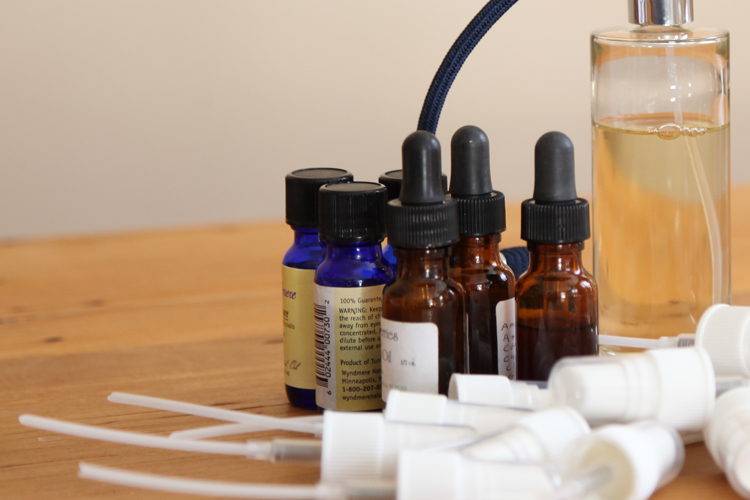
The Triple Bottom Line: Planet, People, Profit
Oh geez. There it is: profit, the word that can make my skin crawl, as it tends to carry with it some negative connotations. However, within the capitalistic model of economics, profit is vital to business. Business is vital to economics. Economics is vital to the maintenance and stability of culture and society, and so on and so forth.
We have to remember that as consumers within this web of a capitalistic economy, profit must play a part in the decisions that businesses make about the products they source, manufacture, and sell to us. We can sit here and say that businesses are wrong or evil for wanting to make a profit off of nature, but that is oversimplifying things. It is how those businesses go about making that profit that should concern us as consumers.
I mention all of this because there are many profitable businesses out there that have taken the time to strategically design their sustainability protocols, which out of good measure will most often be easily accessible to the consumer (and not absent or buried in their website). More often than not, these protocols are based on a framework known as “triple bottom line accounting,” which incorporates three measures of performance: social, environmental, and financial. These three measures are also referred to as the 3P’s: people, planet, profit, or the “three pillars of sustainability.”
Sustainable businesses should be incorporating measures of these three different bottom lines in order to take account of the full cost involved in doing business. “Profit” refers to the standard measure of corporate profit, or the bottom line of profit and loss. “People” refers to how socially responsible a business has been throughout its operations. This is refers not only to employees, but to the communities that the business is involved with. Lastly, “planet” clearly refers to a measure of how environmentally responsible a company has been.
One of the major issues with businesses labeling themselves as “sustainable” using this framework is that while profit and loss is measured in dollars, it is difficult to create a measure for social and environmental impact. These later measures can be company/business specific. As consumers, we may not agree, or we may find that the standards that the business is using to measure social and environmental impact are inaccurate or incomplete. Nonetheless, getting a handle on the concept of “triple bottom line accounting” gives consumers an opportunity to learn about sustainability from a business perspective. This can assist us in our information gathering and help us see the bigger picture when we make purchasing decisions.
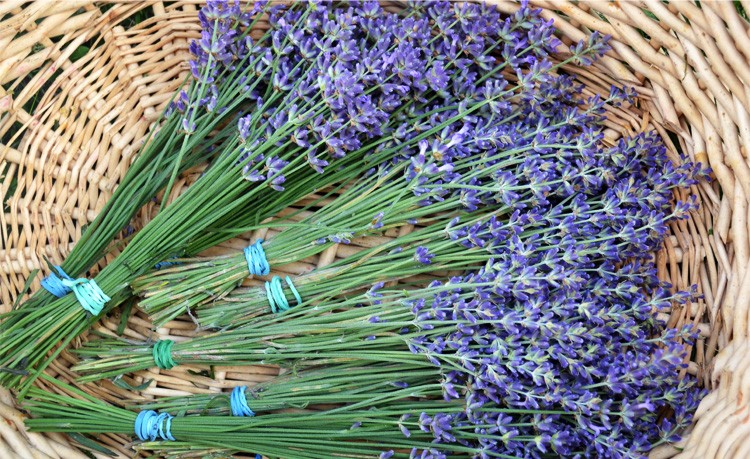
The Bottom Line of Essential Oils: Resource Intensive Products
Now that we have taken the time to contemplate some larger concepts within the definition of “sustainability,” we are ready to get down the nitty-gritty. Unfortunately, it cannot be sugar coated. Essential oils are resource-intensive products. Period. It begs the question as to whether or not essential oils as products could ever fit into a definition of “sustainable.” As consumers of essential oils, we should be willing to face this truth and see it for what it is.
“Why be so glum?” you may ask. Let’s think about the sheer quantity of plant material needed to create a very small amount of essential oil. Hundreds, and sometimes thousands, of pounds of plant material are needed to produce just 1 gallon of essential oil. This is a huge volume when we think about the amount agricultural land needed to grow the plants (soils, fertilizers, pesticides, water) or even when we are considering phrases like “wild crafted” or “ethically harvested” from wild populations.
We also need to consider other resources that are used in the harvest, transport, and production of essential oils. For example, if you are in the United States, and you are buying lavender essential oil, are those lavender plants being grown in the United States? It’s not likely. Let’s think about the quantity of fossil fuels needed for the agricultural production, distillation/production, and international transport of these products.
What about the people involved in essential oil production, from the growing or collecting of plant material, all the way to the final product? Are farmers or gatherers being given a fair price for their efforts? Is there support going back into the community? Do they have access to food, water, healthcare, and education? Is the industry negatively impacting culture? What about the company’s employees? Are working conditions safe?
What about the plants themselves? Are they critically threatened, or does the process of gathering the materials for their essential oil production actually kill the plant? Are they an endemic species, or do they require very specific habitat that can easily be destroyed through intensive harvesting? Are industries cutting down forests to create space for agricultural crops, as is the case of Palm Oil? As you can imagine, there are many, many layers to this onion. And sometimes onions can give us tears.
What is Your Bottom Line?
So perhaps you are now thinking to yourself “This lady doesn’t want us to use essential oils at all.” This is actually not the case. I use essential oils frequently for both self-care and for my family and clients. There are many companies involved in the essential oil industry that take the definition of “sustainability” and run with it. They are doing good work and are transparent and fair in their business dealings.
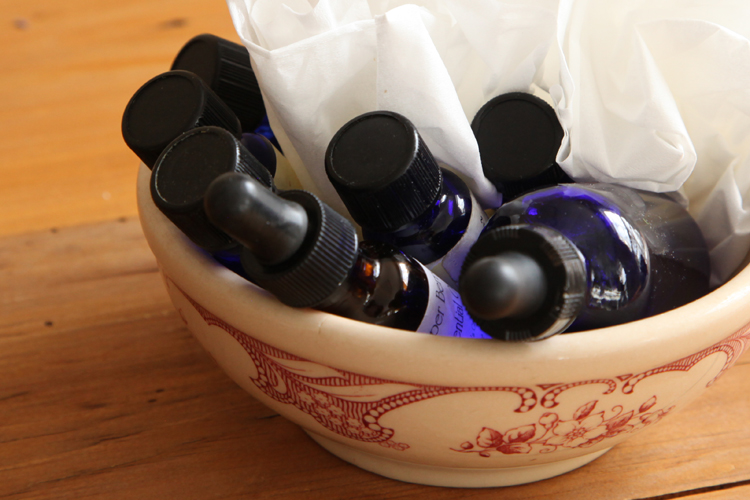
I make my essential oil purchases keeping in mind that essential oils are resource-intensive products. I choose which oils to use, which ones to avoid, and which companies to purchase from, based upon my own knowledge, understanding, and well-developed definition of “sustainability.” As a consumer, I continue to do the work needed to make the most ethical and sustainable purchases possible considering the product I am purchasing. I have created my own bottom line.
When learning how to define sustainability, it is important to remember that our purchasing power can shape entire industries. When we educate ourselves and make informed decisions about our purchases, we as consumers are the ones defining what “sustainability” means, rather than relying on the company or manufacturer to define it for us.
I have presented the preceding concepts and definitions with the hope that we all can discover how to ask better questions in regards to sustainability and learn how to think more critically about our essential oil purchases. It is probably safe to say that if you have read this entire post, you are a consumer of essential oils who is willing to do the work. For that, I commend you.
Resources for further reading:
Cropwatch
Is an Independent Watchdog for Natural Aromatic Products used in the aroma (: fragrance/cosmetics, flavour, aromatherapy), traditional herbal medicine and phytochemical industries. Many of these natural commodities are under threat via their over-exploitation in the wild (see articles in Cropwatch Files section), or their continued use and availability faces uncertainty via the imposition of restrictive & over-precautionary legislation. You can find Cropwatch’s list of threatened aromatic plants here.
http://www.cropwatch.org/
FairWild Foundation
Established in 2008, the FairWild Foundation promotes the sustainable use of wild-collected ingredients, with a fair deal for all those involved throughout the supply chain.
http://www.fairwild.org/
The Numen Blog and the Sustainable Herbs Project
The Sustainable Herbs Project is a new project by the producers of the award-winning documentary, Numen: the Nature of Plants, the first feature length film on the healing power of plants. We are creating an interactive documentary following medicinal plants through the supply chain to provide you with the information needed to feel more confident about the herbal remedies you purchase. With stories, videos, and facts, we’ll bring the supply chain to life with interviews with men and women involved in all aspects of the industry.
http://www.numenfilm.com/blog/sustainable-herbs/
United Plant Savers
United Plant Savers’ mission is to protect native medicinal plants of the United States and Canada and their native habitat, while ensuring an abundant renewable supply of medicinal plants for generations to come.
HANE students and members can get a United Plant Savers membership at a discounted price. Log in to your student account or Herbarium membership and click on the “discount” tab for more info!
http://www.unitedplantsavers.org/
American Sustainable Business Council
The American Sustainable Business Council offers programs that educate and inform the public and policy makers about the benefits of a more sustainable economy, and about policies and practices that can help the economy become more sustainable. The Council spans a growing network of business associations across the United States, which in turn represent over 200,000 businesses and 325,000 business executives, owners, investors, and others.
http://asbcouncil.org/
Lowell Center for Sustainable Production (University of Massachusetts Lowell)
The long-term goal of Lowell Center projects and affiliates is to redefine environmentalism and occupational health and safety while also demonstrating how these concepts are compatible with new systems of production and consumption that are healthy for workers, environmentally sound, economically viable, and socially accountable.
http://www.sustainableproduction.org/
REFERENCES
Elkington, J. (1997). Cannibals with Forks: the Triple Bottom Line of 21st Century Business. Capstone Publishing, LLC.
Leopold, S. (2014). Losing the Scent of Sandalwood. Journal of Medicinal Plant Conservation. United Plant Savers. Spring 2014. Retrieved on 4/19/2015 from http://www.unitedplantsavers.org/images/pdf/2014Journal.pdf
Savitz, A.W. and Weber, K. (2006). The Triple Bottom Line: How Today’s Best-Run Companies Are Achieving Economic, Social and Environmental Success—and How You Can Too. San Franciso, CA: Jossey-Bass.
Willard, B. (2002). The Sustainability Advantage: Seven Business Case Benefits of a Triple Bottom Line. British Columbia , Canada: New Society Publishers.

